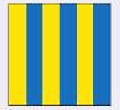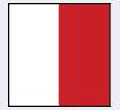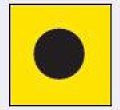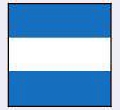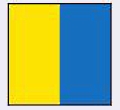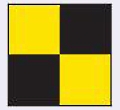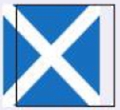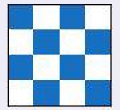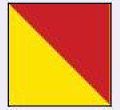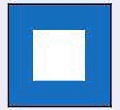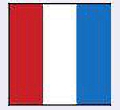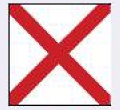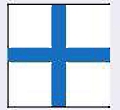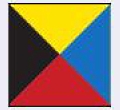Digital Selective Calling (DSC) was first introduced to mariners with the commencement of the Global Maritime Distress and Safety System (GMDSS), primarily for vessels compulsorily equipped with marine radio communications equipment. DSC transmission protocols are widely used in modern digital displays to compress video signals without noticeable loss of quality.
Marine VHF DSC operates on Channel 70. The DSC alert is transmitted via the VHF unit on Channel 70, and is comparable to a telephone paging system. The DSC is designed, in many ways, to replicate what an operator may say when operating Ship’s Antennas Systems and Radio Wave Propagationradiotelephony equipment. DSC is also designed to take the place of an operator continuously monitoring the International distress channel 16. However, regulatory authorities have decided that operators of marine VHF should, when at sea, continue to monitor Channel 16 indefinitely.
DSC-Capable Equipment
VHF transceivers with DSC facilities are available for small vessels. Many marine VHF units have the DSC facility inbuilt with the ability to interface a Global Position System (GPS) receiver to the DSC, in order to ensure accurate and up to date position information that will be automatically included in a Distress Signals and Distress Trafficdistress alert. DSC equipment may also offer the operator the facility to manually update vessel position information.
Station Identity
In order to use DSC techniques, the VHF DSC controller must be permanently programmed with a unique nine digit identification number known as a Maritime Mobile Service Identity (MMSI).
The first three digits, known as the Maritime Identity Digits (MID) of the MMSI indicate the country of registry. The MID for Australian vessels is 503 and is followed by six digits uniquely identifying the vessel itself.
Coast stations are identified by the first two digits of the MMSI as two zeros, i. e. 00, followed by the MID, followed by four digits identifying the station itself: 00503xxxx.
Other types of stations have been allocated prefixes for their MMSI’s, as shown in the table below:
- Vessel – 503xxxxxx;
- Group – 0503xxxxx;
- Coast Station – 005Зхххх;
- SAR Aircraft – 111503xxx; and
- Aids to Navigation – 99503xxxx. (Lightships etc.).
| Some useful two letter signals | |
|---|---|
| AC | I am abandoning my vessel |
| AN | I need a doctor |
| BR | I require a helicopter |
| CD | I require immediate assistance |
| DV | I am drifting |
| EF | SOS/MAYDAY has been cancelled |
| FA | Will you give me my position? |
| GW | Man overboard. Please take action to pick him up. |
| JL | You are running the risk of going aground |
| LO | I am not in my correct position (used by a light vessel) |
| NC | I am in distress and require immediate assistance |
| PD | Your navigation lights are not visible |
| PP | Keep well clear of me |
| QD | I am going ahead |
| QT | I am going astern |
| I require health clearance | |
| QU | Anchoring Is prohibited |
| QX | I request permission to anchor |
| RU | Keep clear of me; I am maneuvering with difficulty |
| SO | You should stop your vessel instantly |
| UM | The Harbour is closed to traffic. |
| UP | Permission to enter Harbour is urgently requested. I have an emergency |
| YU | I am going to communicate with your station by means of the International Code of Signals |
| ZD1 | Please report me to the Coast Guard, New York |
| ZD2 | Please report me to Lloyds. London |
| ZL | Your signal has been received but not understood |
Transmission of a DSC Alert
The DSC transmission is a brief burst of digital data, typically 0,5 seconds in duration on Channel 70. This channel is protected and should not be used for any other type of transmission.
Read also: Understanding Inmarsat SafetyNET: A Vital Tool for Maritime Safety
DSC is a semi-automated method of establishing the initial contact between stations. Once the initial contact has been made, subsequent Using TELEX Over Radio: A Practical Guide for Exploitationradiotelephone communications should continue on any one of the marine VHF channels, depending on the priority of the service required.
Information Contained in a DSC Alert
VHF marine radio equipment fitted with DSC – Digital Selective CallingDigital Selective Calling may offer a single-button distress facility and automated watch keeping. The DSC alert contains the following information as digitised data:
- the identity of the transmitting station (MMSI);
- the priority of the alert (distress, urgency, safety or routine); and
- stations being called (all stations or an individual station).
DSC Alert Formats
The International DSC system provides for the following types of alerts:
- Distress alerts – implicitly addressed to All Stations.
- Distress alert acknowledgement – normally transmitted by coast stations or limited coast stations only. May be used by ship stations under specific circumstances.
- Distress alert relay – normally transmitted by coast stations or limited coast stations only. May be used by ship stations under specific circumstances.
- All stations – used to alert all stations that a distress, urgency or safety alert is about to follow.
- Selective or single station – used to alert an individual station that an urgency, safety or routine alert is to follow.
DSC Distress Alert Procedures
As with a radiotelephony distress call, the DSC distress alert may only be sent on the authority of the master, skipper or person responsible for the safety of the vessel. The DSC distress alert also indicates that the vessel or persons onboard that vessel is in grave and imminent danger and requests immediate assistance.
All stations receiving a DSC distress alert must immediately cease all transmissions capable of interfering with distress communications.
Distress Position Information
With GPS interfacing, position information will automatically be inserted into the distress alert and give an indication of when that position was last updated.
Following the International ITU Radio Regulations: If the position is not updated within 23,5 hours, the section indicating Latitude will show five 9s and the section indicating Longitude will show five 9s. The section indicating the time of the position will show four 8s. Some manufacturers will insert a series of asterisks (*) to replace the digits of position and time information if the position has not been updated. On vessels compulsorily fitted with DSC it may be necessary to update the position information no later than four hours, with a warning system to indicate that the position requires updating. Therefore the position and time at which it was last updated will always be indicated.
DSC Alert Information
A DSC Alert may contain all or some of the following information as digitised data:
- the identity of the calling station (MMSI);
- the station being called (a specific station or all stations);
- the priority of the alert – Terrestrial Urgency and Safety Communications on the Vesselsdistress, urgency, safety or routine; and
- the position of the calling station and an indication of when the position was last updated.
Transmission of a DSC Distress Alert
Operators of VHF DSC may have the option to transmit the distress alert by:
- a dedicated Distress alert button;
- editing of the distress alert menu; or
- selection of the distress priority from a standard menu, if provided.
Some DSCs may offer the operator the option of selecting the distress priority from a transmission menu with a further option of editing the distress alert by selecting and transmitting the nature of the distress situation e. g. “on fire“, “collision” or “abandoning ship“.

However, the primary function of a distress alert is to advise all stations of the distress situation and the location of the distress vessel.
Repetition of Distress Alerts
The acknowledgement of a VHF distress alert should be anticipated from a coast or limited coast station. However, if an acknowledgement is not received for the DSC distress alert then it will automatically be repeated al approximately four minute intervals for five transmissions.
Acknowledgement of a VHF DSC Distress Alert
Ship stations receiving a distress alert from another vessel should take note of the contents and immediately listen on Channel 16 for any radiotelephony MAYDAY traffic that should follow.

Source: AI generated image
If a MAYDAY is received on VHF Channel 16 it should be acknowledged using the standard Radio Calling Procedures Improving Clarity and Efficiency in Radio Transmissionsradiotelephony procedure. Once the DSC distress acknowledgement is received the repeat DSC distress alert is cancelled.
It will be interesting: MSI Broadcasts (Inmarsat SafetyNET): Message Formatting, Monitoring, EGC Logs, and Quality Control
An acknowledgement is not required if the receiving vessel is unable to assist. Ship stations receiving a DSC distress alert from another vessel may acknowledge by DSC if:
- mayday traffic has not been heard on Channel 16 within 5 minutes;
- no other stations have been heard communicating with the vessel in distress; and
- the DSC distress alert is repeated.
Cancellation of an Inadvertent DSC Distress Alert
In the event of an accidental transmission of a DSC distress alert, the transmitting station should immediately:
- switch off the VHF transceiver (this will block any transmission repeats of the DSC alert which would continue until an acknowledgement is received);
- switch on the VHF transceiver and select Channel 16; and then
- broadcast an “All stations” call, indicating the vessel’s name, MMSI time of the accidental alert and an expression of cancellation of the distress alert.







